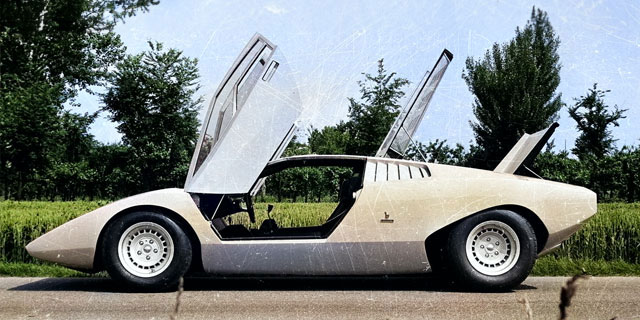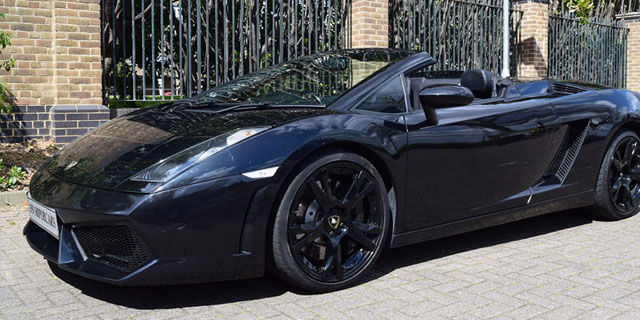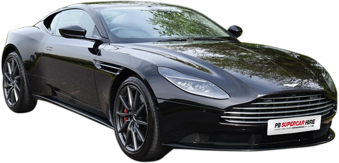History of Lamborghini
With a growing fortune and a love of engines, it was no surprise he became a passionate supercar enthusiast owning, amongst others, the Ferrari 250 GT, a Maserati 3500 GT, Jaguar E-Type, Mercedes-Benz 300SL Gullwing and a Lancia Aurelia B20.
It was the Ferrari 250 GT and Maserati 3500 GT that legend says sparked the desire in Ferruccio to design and produce his own supercar. He was reported to have loved the Ferrari 250 GT’s performance but was increasingly frustrated by its noisy cabin, harsh unforgiving ride, and famously, its unreliable clutch. Lamborghini thought the Maserati 3500 GT was a beautifully engineered grand tourer but he felt it lacked the refinement he expected of a high-performance supercar.
According to Ferruccio Lamborghini’s own records, he discovered that his Ferrari 250 GT used the same clutch components that he used in his tractors. He complained directly to Enzo Ferrari, expecting more from a supercar, Legend has it that Enzo reportedly shouted “Let me make cars. You stick to making tractors.”
Determined he could do better, plus get one over on his manufacturing rival, Lamborghini established his own operation and their first prototype car, the 350 GTV, debuted at the 1963 Turin Motor Show.
The 350 GTV was designed by Giotto Bizzarrini, who had been until 1961 the chief engineer and test driver at Ferrari. Bizzarrini has been the principle designer on the 250 GTO, regarded as one of the greatest sports cars ever built. Enzo Ferrari’s loss was arguably his own fault when Bizzarrini and many other staff walked away from the company after what was called the “Palace Revolt”, when they demanded less interference by Enzo Ferrari and his wife, Laura in management decisions.
Ferrari’s loss was Lamborghini’s gain and Bizzarrini created the phenomenal 3.5-litre V12 masterpiece which became the foundation for many of the Lamborghini cars for the next 50 years. Bizzarrini’s V12 was exactly what Lamborghini had wanted, a high performance, smooth and reliable engine that would beat anything Ferrari could offer at the time.

The Countach LP500 Prototype

The hugely successful Lamborghini Gallardo
With the V12 engine at his disposal, Lamborghini went on to develop the Miura, widely regarded as the first car to really be able to call itself a ‘super’ car. Lamborghini entrusted the body and shape to the Carrozzeria Bertone design house and their chief designer, Marcello Gandini. Gandini, like Lamborghini, is now seen as a visionary in car development, but that wasn’t always the case. He had applied to Bertone in early 1960, but thought to be too radical and his designs too impractical by its then head, Giorgetto Giugiaro. However, in 1965, when Giugiaro left his position at Bertone, the company needed someone to drive the designs forward and challenge Ferrari and they took a gamble on Gandini. Bertone would then go on to almost immediately begin collaborating with Lamborghini.
The Miura debuted at the 1966 Geneva Motor Show to much acclaim. Gandini designed a sleek, mid-engined coupe that seemed to break every design convention followed by Ferrari and the other car designers. Its dramatic low ride, hidden headlamps and sweeping curves showed to the world that Lamborghini were now serious players. Orders began to pour in immediately, even before production had been fully committed to.
As the first Miuras made their way to expectant customers, the press waited to see if the performance and ride would match the looks. It quickly became apparent that it did and the Lamborghini brand began to be the car to be seen in
As they entered the 1970’s the Miura was still the flagship model, but Lamborghini began to expand the range adding the Islero and the Espada and the Jarama, a direct response to the modern, more aggressive styling of the Ferrari Daytona.
In 1971, Lamborghini and Gandini moved things on again, giving us the Countach LP500 prototype, one of the defining moments in supercar design. This futuristic sharp wedge shape and scissor doors had never been seen before. It is difficult to appreciate just how radical this design was as the shape has been made familiar in later Lamborghinis. Production of the Countach began in 1974 and seemed destined to propel Lamborghini into a bright future.
However, the mid 1970s witnessed a turbulent time for supercar production with global economic instability and an oil crisis. This was a challenging time for Ferruccio Lamborghini and he decided to sell his company shares and retire. Without their founder in the driving seat, Lamborghini the brand floundered, being sold multiple times.
The business was eventually bought by the Swiss Mimran brothers in 1984, who after injecting some much needed capital, relaunched the Countach for a new generation. In 1985, the iconic poster car of the 80s, the Countach 5000 Quattrovalvole was born. This Countach boasted a 5.2-litre V12 and a top speed of 190 mph and appeared just as the 1980s money began to flow. Along with the Ferrari Testarossa and the Porsche 959, the Countach heralded a new revolution in supercar ownership.
In 1987, the Chrysler Corporation bought Lamborghini, seeking to add a little Italian flair to its range. The Diablo, with a 492 horsepower and a top speed over 200 mph, was developed to replace the Countach. An amazing car, it sold well and became an icon in its own right, but due to external forces, Chrysler simply couldn’t make the brand profitable. They eventually sold Lamborghini to a Malaysian investment group who did very little with the brand.
Enter the knights with shiny armour, the Volkswagen Group and in particular Audi who bought the brand and returned it to financial stability, gave them access to advanced engineering resources and development capital.
The first result of this collaboration would be the Murciélago launched in 2001. It retained the V12 blueprint of the Muria but was engineered around new carbon fibre technology and an all-wheel drive system, the foundation of what we see in modern Lamborghinis and R8s.
A smaller, more commercial Lamborghini, the Gallardo followed in 2003 and that model became the most successful Lamborghini of all time, returning the brand to the top table of supercar manufacturers. The Gallardo used an Audi V10, primarily designed to keep the cars profitable without losing performance.
We then entered one of the golden ages of Lamborghini cars with the Aventador and the Huracan. Outstanding supercars which we love to be part of our supercar hire fleet.
As we move into a changing market, we have seen the Urus, the first SUV Lamborghini and the hybrid V12 Revuelto which produces 1000 bhp. The future looks bright again for Lamborghini.










